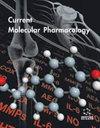An Essential Role of c-Fos in Notch1-mediated Promotion of Proliferation of KSHV-Infected SH-SY5Y Cells
IF 2.9
4区 生物学
Q3 BIOCHEMISTRY & MOLECULAR BIOLOGY
引用次数: 0
Abstract
Background:: This study aimed to investigate the influence of Notch1 on c-Fos and the effect of c-Fos on the proliferation of Kaposi's sarcoma-associated herpesvirus (KSHV)-infected neuronal cells. Methods:: Real-time PCR and western blotting were used to determine c-Fos expression levels in KSHV-infected (SK-RG) and uninfected SH-SY5Y cells. C-Fos levels were measured again in SK-RG cells with or without Notch1 knockdown. Next, we measured c-Fos and p-c-Fos concentrations after treatment with the Notch1 γ-secretase inhibitor LY-411575 and the Notch1 activator Jagged-1. MTT and Ki-67 staining were used to evaluate the proliferation ability of cells after c-Fos levels downregulation. CyclinD1, CDK6, and CDK4 expression levels and cell cycle were analyzed by western blotting and flow cytometry, respectively. After the c-Fos intervention, the KSHV copy number and gene expression of RTA, LANA and K8.1 were analyzed by real-time TaqMan PCR. Results:: C-Fos was up-regulated in KSHV-infected SK-RG cells. However, the siRNA-mediated knockdown of Notch1 resulted in a significant decrease in the levels of c-Fos and p-c-Fos (P <0.01, P <0.001). Additionally, a decrease in Cyclin D1, CDK6, and CDK4 was also detected. The Notch1 inhibitor LY-411575 showed the potential to down-regulate the levels of c-Fos and p-c-Fos, which was consistent with Notch1 knockdown group (P <0.01), whereas the expression and phosphorylation of c-Fos were remarkably up-regulated by treatment of Notch1 activator Jagged-1 (P <0.05). In addition, our data obtained by MTT and Ki-67 staining revealed that the c-Fos down-regulation led to a significant reduction in cell viability and proliferation of the SK-RG cells (P <0.001). Moreover, FACS analysis showed that the cell cycle was arrested in the G0/G1 stage, and the expressions of Cyclin D1, CDK6, and CDK4 were down-regulated in the c-Fos-knockdown SK-RG cells (P <0.05). Reduction in total KSHV copy number and expressions of viral genes (RTA, LANA and K8.1) were also detected in c-Fos down-regulated SK-RG cells (P <0.05). Conclusion:: Our findings strongly indicate that c-Fos plays a crucial role in the promotion of cell proliferation through Notch1 signaling in KSHV-infected cells. Furthermore, our results suggest that the inhibition of expression of key viral pathogenic proteins is likely involved in this process.c-Fos 在 Notch1 介导的促进 KSHV 感染的 SH-SY5Y 细胞增殖过程中的重要作用
背景::本研究旨在探讨Notch1对c-Fos的影响以及c-Fos对卡波济氏肉瘤相关疱疹病毒(KSHV)感染的神经细胞增殖的影响。方法::采用实时 PCR 和 Western 印迹法测定 KSHV 感染细胞(SK-RG)和未感染细胞 SH-SY5Y 中的 c-Fos 表达水平。在敲除或未敲除Notch1的SK-RG细胞中再次测定了C-Fos水平。接着,我们测量了Notch1 γ-分泌酶抑制剂LY-411575和Notch1激活剂Jagged-1处理后的c-Fos和p-c-Fos浓度。MTT和Ki-67染色用于评估c-Fos水平下调后细胞的增殖能力。细胞周期蛋白D1、CDK6和CDK4的表达水平和细胞周期分别通过Western印迹和流式细胞术进行分析。c-Fos 干预后,采用实时 TaqMan PCR 分析 KSHV 拷贝数以及 RTA、LANA 和 K8.1 的基因表达。结果显示C-Fos在KSHV感染的SK-RG细胞中上调。然而,siRNA介导的Notch1敲除会导致c-Fos和p-c-Fos水平显著下降(P <0.01,P <0.001)。此外,还检测到细胞周期蛋白 D1、CDK6 和 CDK4 的减少。Notch1抑制剂LY-411575可下调c-Fos和p-c-Fos的水平,这与Notch1敲除组一致(P <0.01),而Notch1激活剂Jagged-1可显著上调c-Fos的表达和磷酸化(P <0.05)。此外,我们通过 MTT 和 Ki-67 染色获得的数据显示,c-Fos 下调导致 SK-RG 细胞活力和增殖显著降低(P <0.001)。此外,FACS分析显示,细胞周期停滞在G0/G1阶段,c-Fos敲除的SK-RG细胞中细胞周期蛋白D1、CDK6和CDK4的表达下调(P <0.05)。在 c-Fos 下调的 SK-RG 细胞中还检测到 KSHV 总拷贝数和病毒基因(RTA、LANA 和 K8.1)表达的减少(P <0.05)。结论我们的研究结果有力地表明,在 KSHV 感染的细胞中,c-Fos 通过 Notch1 信号在促进细胞增殖方面发挥着至关重要的作用。此外,我们的研究结果表明,关键病毒致病蛋白的表达抑制可能参与了这一过程。
本文章由计算机程序翻译,如有差异,请以英文原文为准。
求助全文
约1分钟内获得全文
求助全文
来源期刊

Current molecular pharmacology
Pharmacology, Toxicology and Pharmaceutics-Drug Discovery
CiteScore
4.90
自引率
3.70%
发文量
112
期刊介绍:
Current Molecular Pharmacology aims to publish the latest developments in cellular and molecular pharmacology with a major emphasis on the mechanism of action of novel drugs under development, innovative pharmacological technologies, cell signaling, transduction pathway analysis, genomics, proteomics, and metabonomics applications to drug action. An additional focus will be the way in which normal biological function is illuminated by knowledge of the action of drugs at the cellular and molecular level. The journal publishes full-length/mini reviews, original research articles and thematic issues on molecular pharmacology.
Current Molecular Pharmacology is an essential journal for every scientist who is involved in drug design and discovery, target identification, target validation, preclinical and clinical development of drugs therapeutically useful in human disease.
 求助内容:
求助内容: 应助结果提醒方式:
应助结果提醒方式:


